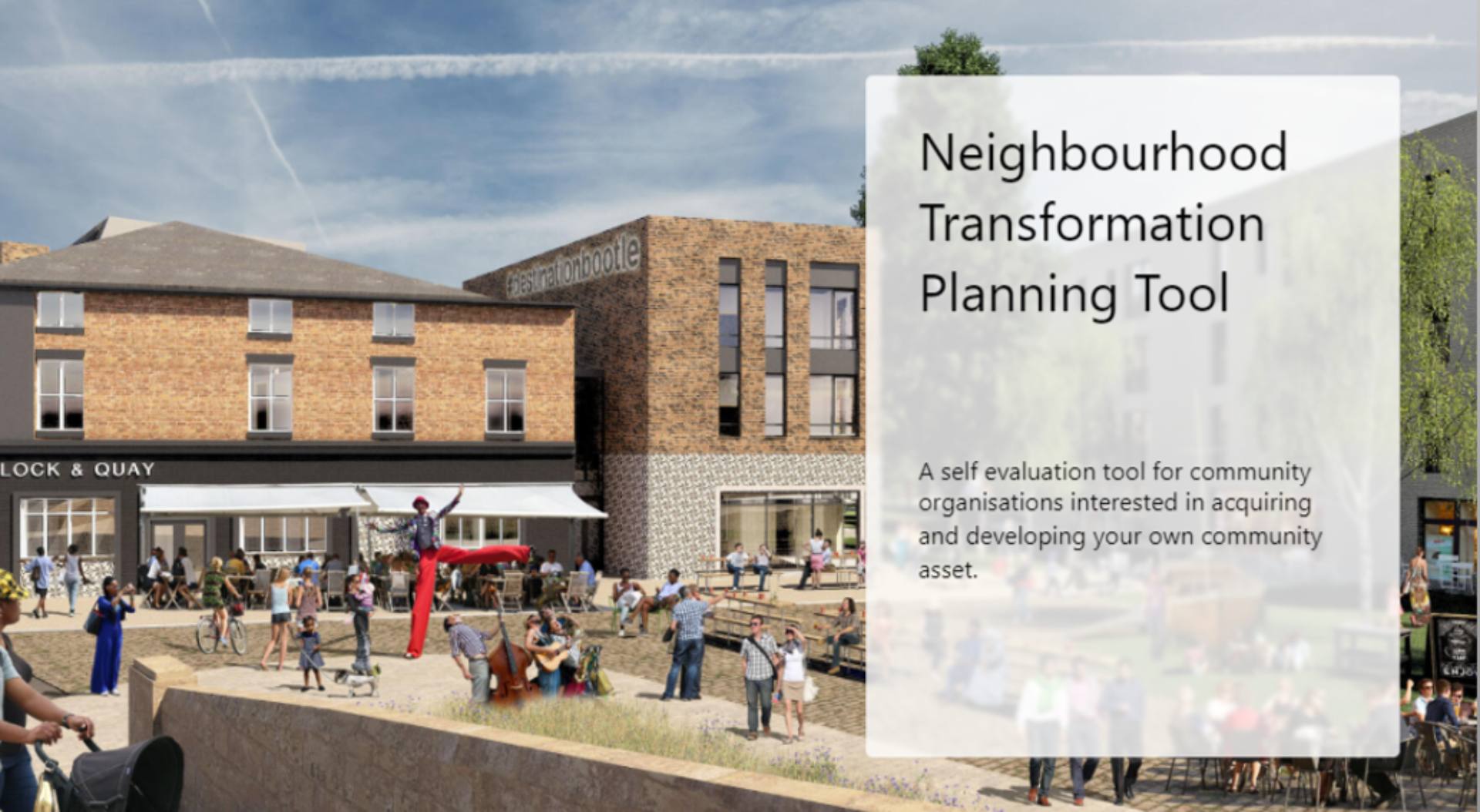Community assets are buildings and land used for the wellbeing or social interest of the local community, such as parks, housing, workspaces, centres, theatres and pubs, run by communities, for communities. Community assets form a golden thread in our social and cultural infrastructure, providing affordable and accessible spaces for collective gathering and organising, enhancing sense of belonging and local pride, and improving quality of life.
Community asset development can build wealth within communities by transforming derelict buildings and unused pockets of urban land into community assets that offer spaces for community engagement and wellbeing, and generate sustainable incomes for the groups that run them, reducing reliance on grants and donations.
The tool was co-produced by Traynor and Moore in partnership with lead community partner, Safe Regeneration, with funding from Research England awarded through the University of Liverpool Public Policy Quality Scheme. Safe Regeneration CEO, Brian Dawe, and Partnerships Director, Jane Dawe, led engagement with more than 30 community partners and anchor institutions across the Liverpool city region and the UK to explore community needs and preferences.
Informed by a wide range of stakeholder perspectives, the project team worked together to define the tool’s key features, develop the tool’s content, and explore and test appropriate online technologies. The result is an interactive online tool that pools and shares knowledge drawn from both research literature, including earlier studies by Traynor and Simpson (2020), Archer, Moore and Mullins (2020) and others, and from the experiences of community asset developers. This approach has enabled the team to produce a tool that illustrates the key decisions and approaches involved in community asset development in an inclusive and accessible way, including relatable case studies in the early, middle and latter stages of community asset development.
Currently, a significant proportion of the sector’s assets are concentrated amongst a small number of organisations. In 2014, just five charities owned around a fifth of the sector’s net assets (Kane et al., 2014, p.64). Today, about 24,000 organisations or 15% of all voluntary organisations report having zero assets, and larger organisations are receiving an increasing amount and share of the sector’s total income. Major and super-major organisations (with income over £10m) are responsible for over half (55% or £29.5bn) of the sector’s annual expenditure (Tabassum, 2023). In the Liverpool city region, the picture is similarly skewed towards a few large players: the 35 largest social economy organisations, representing just 2.5% of the total, account for around three quarters of all income, assets and jobs in the sector (Heap et al., 2017, p. 9).
And the problem is not necessarily a lack of funding. The last government created a £150 million Community Ownership Fund enabling communities to take over local assets and run them as community businesses, including sporting and cultural institutions, community centres, pubs and high street shops, and Homes England has £7.39 billion of government funding to deliver up to 130,000 affordable homes outside of London by the end of March 2026. Charities and community organisations are encouraged to apply for help with new build construction or retrofitting older homes to increase the supply of affordable housing. Separate funds are available in London and in the devolved nations, and through some trusts and foundations, such as Power to Change, which supports community businesses to start up and grow.
However, many community groups lack the skills, capacity and confidence to design and deliver complex development projects. Many are increasingly overwhelmed with increasing demands for support from communities hollowed out by austerity, the COVID-19 pandemic and the so-called “cost-of-living” crisis, all while facing funding cuts from struggling local authorities, and growing competition for trust and foundation grants and dwindling public donations (NCVO, 2023).
The Neighbourhood Transformation Planning Tool aims to support community groups through these challenges, providing users with a “way in” to learning about community asset development in a way that is accessible, inclusive and relatable. The team hopes that the tool will demystify the asset development process, provide practical information and options, challenge common myths, spark conversations and ambitions, and help groups take a significant step forward in transforming their communities.
Next steps include disseminating the tool, gaining further stakeholder feedback and refining the content. The team is also developing plans for a Community Leadership Development Programme which will guide and support aspiring community asset developers across England and Wales to deliver neighbourhood change.

References
Archer, T., Moore, T., & Mullins, D. (2020). Homes in Community Hands: Baseline Evaluation Report. Power to Change. https://www.powertochange.org.uk/research/homes-community-hands-evaluation-report/
Heap, H., Southern, A. and Thompson, M. (2017) The Scale, Scope and Value of the Liverpool City Region Social Economy. Heseltine Institute for Public Policy and Practice. University of Liverpool. November 2017. https://www.liverpool.ac.uk/media/livacuk/publicpolicyamppractice/the-scale-scope-an-value-of-the-Liverpool-City-Region-social-economy.pdf
Kane, D., Heywood, J., and Bass, P. (2014) The UK Civil Society Almanac. London: NCVO. https://www.ncvo.org.uk/news-and-insights/news-index/uk-civil-society-almanac-2021/about/previous-editions/
NCVO (2023) Where do voluntary organisations get their income from? UK Civil Society Almanac 2023. 12 October 2023. https://www.ncvo.org.uk/news-and-insights/news-index/uk-civil-society-almanac-2023/financials/where-do-voluntary-organisations-get-their-income-from/
Tabassum, N. (2023) UK Civil Society Almanac 2023: Data, trends, insights. National Council of Voluntary Organisations. 12 October 2023. https://www.ncvo.org.uk/news-and-insights/news-index/uk-civil-society-almanac-2023/
Traynor, Kerry and Simpson, Glenn (2020) Community hubs: Ten strategies for sustainability - Learning from the experience of Safe Regeneration. Power to Change. 25 February 2020. https://www.powertochange.org.uk/wp-content/uploads/2020/02/SAFE-Regeneration-report-V4-Digital.pdf
